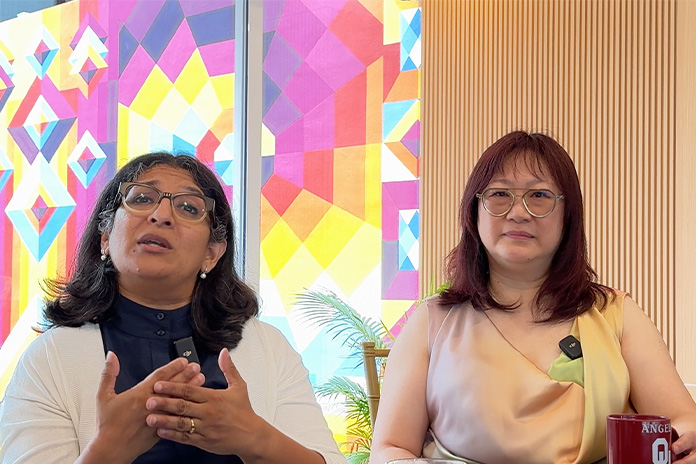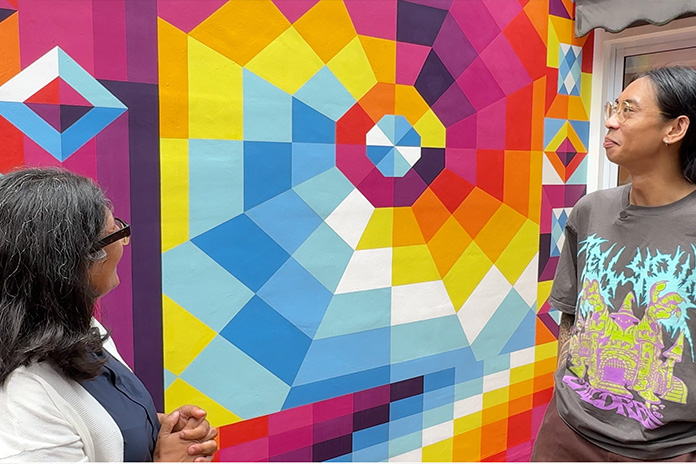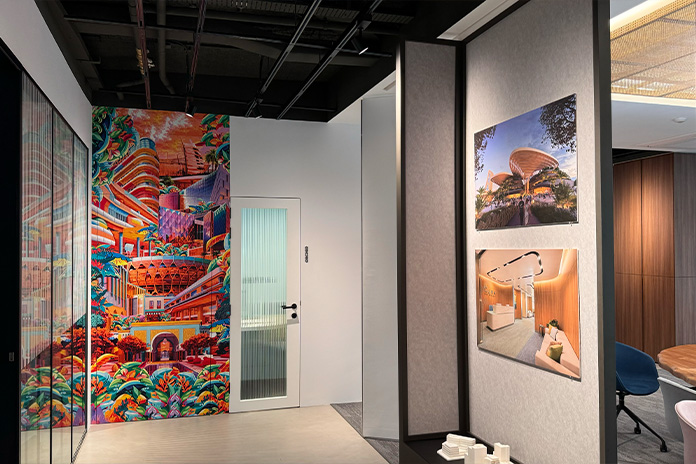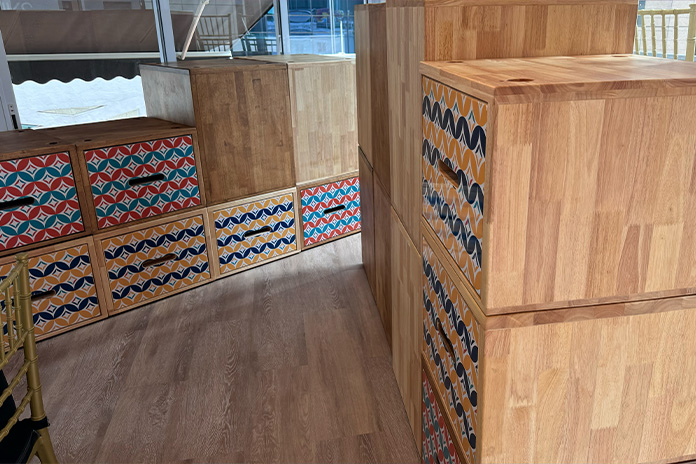
IN the built-up environment of Singapore’s busy central business district, the incongruous architecture of The Quadrant is a reminder that being different can sometimes serve as a pleasant reflection of a different era.
The art deco building has endured the modernisation processes at its doorstep, and now, as a heritage building, it’s secured its position as an architectural icon that sets it apart from the glass-and-steel towers dwarfing it.
In 1939, the same year that the Kwangtung Provincial Bank was established in The Quadrant, on the other side of the planet, Harwood K. Smith started his architectural practice, HKS, in Dallas, Texas. It seems fatefully appropriate then that global design firm HKS has chosen the Quadrant to locate its Singapore office.
HKS’ approach to the use of space is built on how best people can utilise it and how it fits into the environment. Its design influence spans the broad spectrum of architectural use cases — from cities to residential environments, and everything in between.
WATCH THE INTERVIEW
Old World, New Space
The HKS office in Singapore is accessed via a creaky old elevator with a collapsible gate.
As you exit the elevator, you leave the old world behind and venture into the modern offices of HKS.
What strikes you is the lack of uniformity about the space. Instead of neat cubicles, there are different cosy corners for meetings, while boardrooms and work spaces are designed to be bright and colourful. Up a narrow staircase, we find ourselves on the rooftop of The Quadrant, where a function room has been built, with movable blocks that serve as artistic and practical furniture. Beyond is a balcony with a view of the towering giants in the neighbourhood glinting and shining in the tropical warmth.
In a corner of the balcony, a vibrant piece of art by Chris Chai presents the environment in multi-coloured geometric shapes, almost like a psychedelic heat map.
In this welcoming environment of fluid spaces, Dr Upali Nanda and Angela Lee are eager to talk about the relationship between mental health and design.
Detroit-based Nanda is a Partner and Executive Vice President at HKS, and is responsible for research projects in design practice, focusing on the impact of design on human health and perception.
Lee is the Managing Director, Asia Pacific, Europe and Middle East, and is the founding director of HKS Singapore.
ALSO READ: Adapting Your Blueprint To Fit Your Business
Improving Mental Health
In recent years, perhaps amplified by the restrictive nature of COVID-19, mental health has become a major cause for concern around the world. While many an HR leader has tried to get their head around the issue, HKS has conducted many surveys and studies on the topic.
The HKS Singapore office benefitted from the initial work of its Atlanta office which served as a ‘living lab’ to study how environment factors impact cognitive function and well-being.
If the first impression is that it’s going to cost a fair bit to move things around to get the office into a more desirable state, Lee is quick to point out that it doesn’t need to be expensive.
“We don’t even have to start with moving walls at the beginning. We can start by changing some of our habits,” Lee explains.
The working day can be broken into smaller blocks of time, for greater efficiency, including time to think and rest.

Taking a more macro perspective, Nanda explains that the potential of a city can be better appreciated when you discover things that you didn’t know before.
“It’s the hidden potential in the places we already have; a place to go and rest, a place to go and meet other people. A place to do creative work.
“I think rediscovering our museums and our libraries, and places to be intellectually curious, that’s the first step,” Nanda explains.
She adds that you first have to learn what you want your brain to do, then think about what’s the best place to do it.
“There were five affordances that we identified that the workplace needed to have: places for focus; places for collaboration; places for ideation; places for socialisation; and then places for rest.”
ALSO READ: Coach Your Leadership Back On Track
Pattern Seekers
Nanda continues: “Good design creates choices that can be really evident to the user. That’s why we call them affordances. You need to know that choice is available to you and you need to be empowered to use that choice. You do not need more space.”
But she acknowledges that we are creatures of habit, and we seek patterns in life that we can latch on to. Breaking these addictions and reconditioning the brain is the hardest part of the process.

The Number 3
This was put to the test during the pandemic when people were forced to work from home. It was a pattern that was broken when the world emerged from isolation and had to decide whether to continue working from home, return to work as it was before, or adopt a hybrid approach.
“We did a lot of research on brain healthy workplaces during COVID,” Nanda explains. It yielded a number that seems to work best for people who are on the move.
“There does seem to be this number 3; that you have to be 3 days continuously somewhere, to be able to really maximise the potential of that place and get behaviours in place.
“When you do one thing one day and another thing the next day, the conditioning doesn’t happen and it can be very distracting.”
Pause For A Cause
Another thing that the pandemic took away was transition time, whether it’s the daily commute, or the short walk between meeting rooms. “The in-between time was something that was actually quite precious,” Nanda explains.
“It gave me time to reset my brain. In the digital world, everything collapsed. We go from one Zoom room to another Zoom room to another Zoom room. We lost that transition time.
“So, one of the things that we’ve learned is to make the most of your transit time.”

“It’s ‘me’ time,” Lee chimes in.
“I save those times for, maybe replying to some texts, or to play games. My head needs to hit some dinosaur 15 minutes a day,” Lee explains, laughing.
Nanda adds that the pauses in the day are important for brain health.
“The five minutes of rest that you take, the five minutes of doing nothing, actually allows the grooves in your memory to remember and reset.”
And in order to achieve that, all you need to do is sit down and reflect and do nothing.
Not the easiest thing to do when you are constantly chasing deadlines and commitments, but, in the long run, coming up to snatch those little puffs of mental breathers will help you get to your goal in better shape.




















